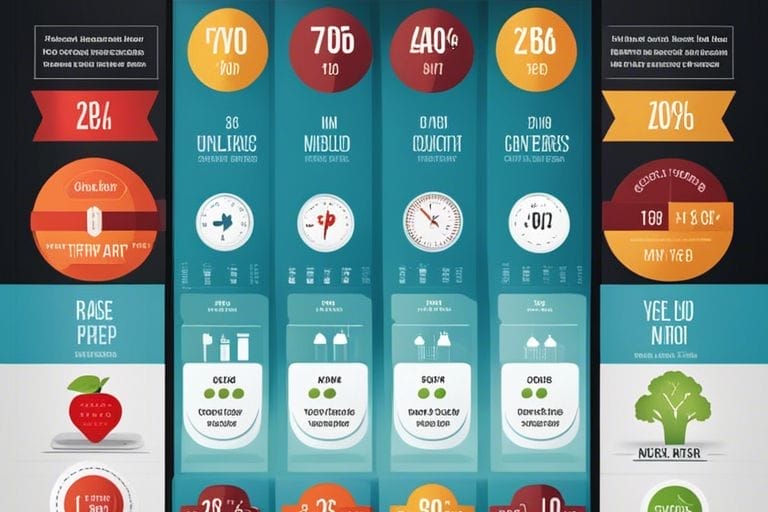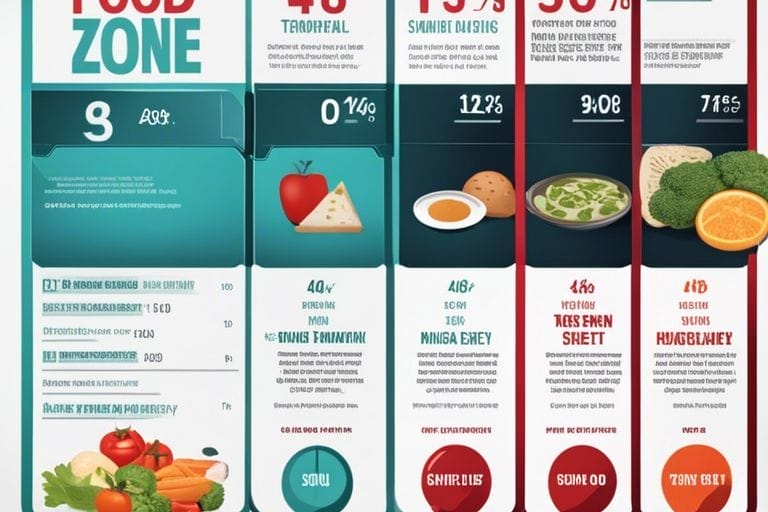Peradventure, you have ever found yourself pondering upon whether it is safe to leave your food out overnight, then you have stumbled upon the right blog. In this article, we will uncover the potential risks associated with leaving food out at room temperature for extended periods of time. You will learn about the dangerous bacteria that can grow on food left out overnight, and the positive steps you can take to prevent foodborne illness. By the end of this post, you will have a clearer understanding of the importance of food safety and how to properly handle perishable items to keep yourself and your loved ones safe.
Key Takeaways:
- Perishable foods such as meat, poultry, seafood, dairy, and cut fruits and vegetables should not be left out at room temperature for more than 2 hours.
- Bacteria growth is the main concern when leaving food out overnight, as it can multiply rapidly in the “danger zone” of 40°F-140°F. This can lead to foodborne illnesses.
- Safe food handling practices, such as storing leftovers in the refrigerator within 2 hours, and reheating properly, are essential for preventing foodborne illnesses from contaminated food left out overnight.

Understanding Food Safety
While it may be tempting to leave food out overnight, it’s important to understand the potential risks involved. Food safety is a crucial aspect of maintaining your health and well-being, and the decisions you make regarding food storage and handling can have a significant impact on your overall safety.
Definitions and Key Concepts
When it comes to food safety, it’s essential to understand some key terms and concepts. Foodborne illness, also known as food poisoning, refers to illnesses caused by consuming contaminated food. Bacteria, viruses, and parasites are common culprits that can contaminate food and cause illness. Understanding these terms will help you recognize potential risks and take steps to prevent foodborne illness.
Basic Food Safety Standards
Basic food safety standards are essential for preventing the spread of harmful bacteria and ensuring the safety of the food you consume. Proper food storage, including refrigeration and freezing, is crucial for preventing the growth of bacteria. Additionally, proper food handling and cooking temperatures play a significant role in ensuring the safety of your meals. By adhering to these standards, you can significantly reduce the risk of foodborne illness.
Factors Influencing Food Spoilage
Even with proper handling and storage, the temperature, microbial growth, and foodborne illnesses can contribute to food spoilage. Let’s take a closer look at the key factors that influence the safety of leaving food out overnight:
- Temperature: It plays a crucial role in food spoilage. High temperatures can promote the growth of bacteria, while low temperatures can slow down the spoilage process
- Microbial Growth: Bacteria, yeast, and mold can thrive in the right conditions, leading to food spoilage
- Foodborne Illnesses: Consuming spoiled food can result in foodborne illnesses, causing various symptoms such as vomiting, diarrhea, and fever
Recognizing these factors can help you make informed decisions about the safety of consuming food left out overnight.
Temperature and the Danger Zone
Temperature plays a critical role in determining the safety of leaving food out overnight. The danger zone for food is between 40°F and 140°F, where bacteria can grow rapidly, doubling in number in as little as 20 minutes. When food reaches this temperature range, it becomes more susceptible to spoilage and the risk of foodborne illnesses increases.
Microbial Growth and Foodborne Illnesses
Microbial growth is a significant factor contributing to food spoilage. Bacteria, yeast, and mold can quickly multiply in the right conditions, leading to the spoilage of food. Consuming contaminated food can result in foodborne illnesses, causing symptoms such as nausea, vomiting, diarrhea, and fever. It’s essential to be mindful of the potential for microbial growth when deciding whether to consume food left out overnight.
Guidelines for Specific Types of Food
Now, when it comes to leaving food out overnight, it’s essential to understand the specific guidelines for different types of food. Here are some critical pointers to keep in mind:
- Perishable items: These include meat, dairy products, and plant-based items that are prone to spoiling if left out at room temperature for too long. It’s best not to leave these foods out for more than two hours.
- Non-perishable items: Items like canned goods, bread, and some snacks can generally be left out for a more extended period, but it’s still essential to exercise caution and use your best judgment before consuming them.
This is especially important when dealing with perishable items as consuming them after being left out overnight can pose a significant risk to your health.
Perishable Versus Non-Perishable Foods
When it comes to food safety, differentiating between perishable and non-perishable items is crucial. Perishable foods such as meat, dairy, and fresh produce are more susceptible to bacterial growth if left out at room temperature for an extended period. On the other hand, non-perishable items like canned goods and dry snacks are generally safer to consume even if they’ve been left out overnight. It’s always best to err on the side of caution and refrigerate perishable items promptly to avoid any potential health risks.
Meat, Dairy, and Plant-Based Items
When it comes to meat, dairy, and plant-based items, leaving them out overnight can result in unsafe levels of bacterial growth and spoilage. Perishable foods like meat and dairy products should not be left out at room temperature for more than two hours to prevent the risk of foodborne illness. However, if these foods have been properly stored and refrigerated promptly, they should still be safe for consumption. It’s essential to prioritize the safety of food to avoid any potential health hazards.
Prevention and Best Practices
Your main goal should always be to prevent foodborne illnesses by following best practices for food safety. This includes proper handling, storing, and reheating of your food. One common question that arises is whether food left partially uncovered in the fridge is safe to eat. If you are curious about this, you can find a discussion on this topic on Reddit.
Safe Food Handling Techniques
When it comes to safe food handling, there are several key techniques to keep in mind. Always make sure to wash your hands thoroughly before and after handling food. Use separate cutting boards for raw meat and produce to avoid cross-contamination. Additionally, be sure to cook food to the appropriate internal temperatures to kill any harmful bacteria. Following these techniques will greatly reduce the risk of foodborne illness.
Storage and Reheating Recommendations
Proper storage and reheating of food are crucial to ensuring its safety. When storing food, make sure to use airtight containers and refrigerate perishable items promptly. When reheating leftovers, ensure they reach an internal temperature of 165°F (74°C) to kill any bacteria that may have developed. By following these recommendations, you can significantly minimize the risk of consuming unsafe food.

Is Food Safe Left Out Overnight? Insights Unveiled
Conclusively, it is crucial to understand the potential risks of leaving food out overnight. Bacteria can grow rapidly in the “danger zone” of 40°F – 140°F, leading to foodborne illnesses if consumed. To ensure the safety of your food, it is essential to follow the two-hour rule, where perishable foods should not be left out for more than two hours. Additionally, proper storage and reheating techniques can help minimize the risk of food contamination. By being mindful of these factors, you can protect yourself and your loved ones from potential foodborne illnesses and enjoy safe, delicious meals.
FAQ
Q: Is it safe to eat food left out overnight?
A: No, it is not safe to eat food that has been left out at room temperature for more than two hours. Bacteria can multiply rapidly in the “danger zone” (40°F – 140°F), potentially causing foodborne illness. Always refrigerate perishable foods promptly to prevent foodborne illness.
Q: What are some examples of perishable foods that should not be left out overnight?
A: Perishable foods that should not be left out at room temperature for more than two hours include meat, poultry, seafood, dairy products, cooked vegetables, and cooked pasta. These foods can quickly grow bacteria when left out in the “danger zone”. It is best to refrigerate these items promptly after use.
Q: How can I tell if food left out overnight is still safe to eat?
A: It is generally not safe to eat food that has been left out overnight, even if it looks and smells fine. Bacteria that cause foodborne illness do not always affect the taste, appearance, or smell of food. When in doubt, throw it out. It’s better to be safe than sorry when it comes to food safety.

